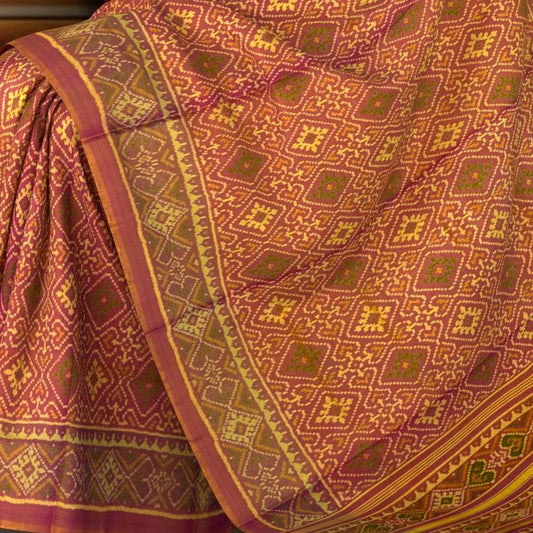Preserving Tradition: The Richness of Kanchipuram Silk Sarees and the Weaver Community

In a world of ever-changing fashion trends and modern materials, there is something timeless and irreplaceable about traditional textiles that have stood the test of time.
One such embodiment of elegance and cultural heritage is the Kanchipuram silk saree. Woven with intricate designs and rich craftsmanship, these sarees are not just pieces of clothing, but treasures that represent India's rich cultural history.
The weaver community behind Kanchipuram silk sarees is a vital part of this heritage, and preserving their artistry is crucial for the country's culture and their own well-being.
The Elegance of Kanchipuram Silk Sarees
Kanchipuram, a small town in Tamil Nadu, has long been celebrated as the "Silk City" for its unparalleled mastery in silk weaving. The Kanchipuram silk saree, also known as the "Queen of Silks," is characterized by its opulent silk fabric, vivid colors, and intricate zari work.
Each saree is a masterpiece, taking weeks or even months to create, with every thread woven by hand. What truly sets these sarees apart is the unique weaving technique that results in durability and luxurious texture.
The designs often feature traditional motifs such as peacocks, temples, and floral patterns that hold deep cultural significance. The richness of Kanchipuram silk sarees doesn't just lie in their physical beauty, but in the stories they tell and the cultural heritage they carry.
The Importance of Preserving the Weaver Community
Behind every Kanchipuram silk saree is a skilled weaver, often from a generational lineage of weavers who have dedicated their lives to this intricate craft. Unfortunately, the Weaver community is facing numerous challenges today.
The rise of mass-produced textiles and changing consumer preferences have led to a decline in demand for handwoven sarees. This has put the livelihoods of these artisans at risk, leading to a potential loss of traditional skills and knowledge that have been passed down for centuries.
1. Cultural Heritage: Kanchipuram silk sarees are not just garments; they are symbols of India's cultural heritage. The designs and techniques used in these sarees are a direct link to centuries of tradition and artistry. Preserving this craft is essential to maintaining a connection with our roots and passing on our heritage to future generations.
2. Socioeconomic Impact: The weaver community constitutes a significant part of India's rural workforce. By supporting these artisans, we contribute to rural development, providing employment opportunities and contributing to the overall economic growth of the country.
3. Sustainable Fashion: In a world increasingly concerned about sustainability and ethical fashion, handwoven textiles hold immense value. Kanchipuram silk sarees are created using natural materials and sustainable practices, making them a responsible choice for conscious consumers.
4. Unique Craftsmanship: The skill and dedication required to produce a Kanchipuram silk saree are unparalleled. By preserving the weaver community, we ensure that this unique craftsmanship continues to thrive, creating pieces that are unmatched in quality and beauty.
5. Source of Pride: Supporting the weaver community and wearing Kanchipuram silk sarees is a source of pride. It's a celebration of our heritage and a way to honor the labor and creativity that goes into crafting each masterpiece.
Conclusion
The richness of Kanchipuram silk sarees extends far beyond their physical allure. They encapsulate the soul of India's cultural heritage and the legacy of the weaver community.
As consumers and admirers of these exquisite creations, it is our responsibility to value and support the artisans behind them. By doing so, we not only ensure the survival of a cherished tradition but also contribute to the prosperity of the weaver community and the preservation of our nation's invaluable cultural tapestry.







Leave a comment
Please note, comments need to be approved before they are published.